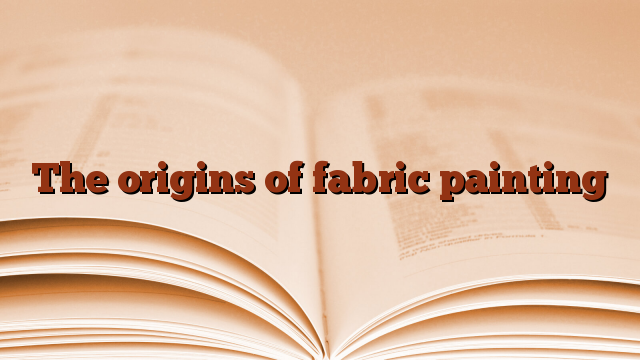You look at the wonderful tapestries and marvel at the designs. The painted fabrics take your breath away and make you wonder how on earth did they do that? Craftsmen of all ages have passed on their amazing skills, teaching people how to paint fabrics for centuries.
Fabric painting is said to have its roots in Asia, eventually making its way through Europe, India and Africa as merchants traded their wares throughout the ancient world. At the time, fabric painting techniques were being adapted by artisans in each of these countries to reflect the culture of their time.
It’s quite interesting to note that while the craft started in a certain place and time, it hasn’t stayed the same, instead evolving into quite interesting forms. Despite the distance and language barriers, each artisan experimented, pushed and refined their painting technique, adding a unique twist while still embracing the basic principles of fabric painting craft.
Ancient civilizations introduced the aspect of painting on human bodies much earlier than painting on fabrics. This practice was later adapted to apply to fabrics. Fabrics were woven, patterns were designed before and sometimes after the fabric was constructed. Another method to create this opulent looking fabric was to dye the individual yarns before weaving the fabrics. Today, artisans no longer limit themselves to dyeing yarn or painting fabrics, but have gone a step further and paint directly on the assembled garment.
Although much has changed in modern times, there are still a number of elements that have remained the same in the craft of fabric painting. The complexity of the design, the skill of the craftsmen and the variety of materials and dyes used are some of the prominent elements that remain.
Although this art was once considered a discipline for a select group of skilled artisans, it has become a well-received and eagerly sought-after profession and hobby. Once there is interest and the basic concepts and techniques are shared, most people are quite amazed at how easy it really is to learn how to paint on fabric.
Yes, times have changed, people are no longer waiting to be taught by the masters of the craft, but are ready to take the leap of faith and embrace the simple techniques taught by many of the leading textile artists and fabric painters of the world be equally shared today. You no longer have to queue or travel great distances to gather the vital information you need to become a successful fabric painter. The information is now at your fingertips and available in many forms, including downloadable e-courses and e-books.
With all the tools and resources available, the budding textile artist longs to get active with colour; this is exactly where the choice of fabric, design concept and colors come into play. It is important to know what you want to do with the painted fabric. Will it be purely aesthetic or will it have a specific function? Now that you’ve made up your mind, you’re ready to create your masterpiece and add your cultural flair to your fabrics for generations to come to admire.
Thanks to Teri M Bethel | #origins #fabric #painting

Leave a Reply